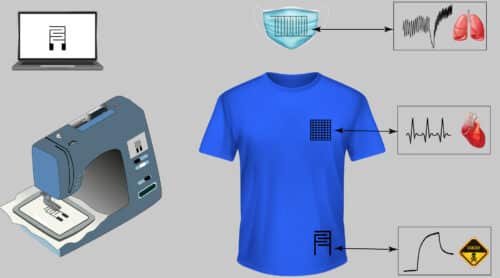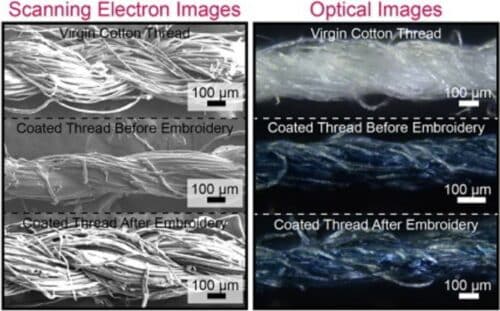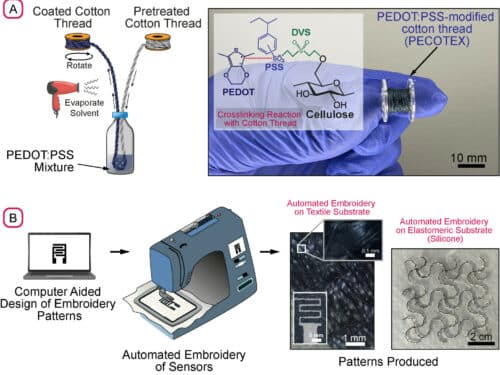Researchers develop clothing material with sensor integrated threads enabling a new generation of wearable technology.

Wearable sensors, like those on smartwatches, let us continuously monitor our health and well-being non-invasively. Until now, however, there has been a lack of suitable conductive threads, which explains why wearable sensors seamlessly integrated into clothing aren’t yet widely available.
Researchers at Imperial College of London have spun a sensor into clothing. This sensor is spun from a new Imperial-developed cotton-based conductive thread called PECOTEX. This $0.15 per meter worth of thread can seamlessly integrate more than 10 sensors into clothing using industry-standard computerized embroidery machines.

“The flexible medium of clothing means our sensors have a wide range of applications. They’re also relatively easy to produce which means we could scale up manufacturing and usher in a new generation of wearables in clothing,” said Fahad Alshabouna, PhD candidate at Imperial’s Department of Bioengineering.
The material is machine washable, and is less breakable and more electrically conductive than commercially available silver-based conductive threads, meaning more layers can be added to create complex types of sensor.

During embroidery, PECOTEX was more reliable and less likely to break, allowing for more layers to be embroidered on top of each other. After embroidery, PECOTEX demonstrated lower electrical resistance than the silver-based threads, meaning they performed better at conducting electricity. The embroidered sensors retained the intrinsic properties of the fabric such as wearability, breathability and feel-on-the-skin. They are also machine washable at up to 30°C.
Dr Firat Güder, of the Department of Bioengineering said, “Our research opens up exciting possibilities for wearable sensors in everyday clothing. By monitoring breathing, heart rate, and gases, they can already be seamlessly integrated, and might even be able to help diagnose and monitor treatments of disease in the future.”





